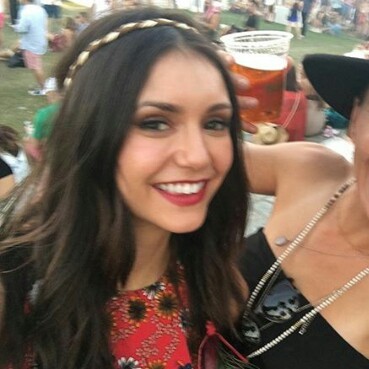#icons nina ann nelson
Text









nina ann nelson icons
like/reblog if you save
credit gagalacrax on twitter if you use
give credits if you repost, please
follow us for more
#icons#nina ann nelson#nina ann nelson icons#icons nina ann nelson#icons girls#girls icons#site model icons#twitter icons#random icons#female icons#random girls icons#icons twitter#icons site model#site models twitter#site models icons#models icons#icons site girls#site girls icons#nina ann#nina ann icons#icons nina ann#nina nelson#nina nelson icons#icons nina nelson
10 notes
·
View notes
Photo









credit @anahispuente
like this post if you save
#nina ann nelson icons#icons nina ann nelson#nina ann nelson#icons#nina ann icons#icons nina ann#mile
7 notes
·
View notes
Photo









nina ann nelson
like or reblog if you save, please ↓
© cassianwarrior for credits on twitter
7 notes
·
View notes
Photo









icons with…
like or reblog if you use/save
happy women’s day!!!
#nina dobrev#nina dobrev icons#millie bobby brown#millie brown icons#shelley hennig#shelley hennig icons#halsey#ashley frangipane#halsey icons#ashley frangipane icons#ari grande#jesy nelson#jesy nelson icons#leigh anne pinnock#leigh anne pinnock icons#jade thirlwall#jade thirlwall icons#perrie edwards#perrie edwards icons
36 notes
·
View notes
Text
Let's Revisit 1990's FLATLINERS, Shall We?
New Post has been published on https://nofspodcast.com/lets-revisit-1990s-flatliners-shall/
Let's Revisit 1990's FLATLINERS, Shall We?
The upcoming sequel/reboot to Flatliners is due in theatres any day now. Despite not being a huge sequel buff, we’ll likely be front-and-center opening weekend; covering the film for an upcoming episode of our podcast; Nightmare on Film Street.
Before we dive headfirst into reboot territory, I always try to re-visit the original film beforehand. This time around, I figured I’d invite you all to join me. So, while we wait for Ellen Page to give us her best Julia Roberts impression, let’s head back to 1990, with Flatliners OG!
Meet Cute
youtube
Flatliners is a hybrid of sub-genres. It sits nestled between psychological Horror and Science Fiction. The film is directed by Joel Schumacher (The Lost Boys, Phonebooth, The Number 23), and written by Peter Filardi (The Craft). The film boasts a pretty all-star cast by the 90’s standards, including many up-and-comers on their way to becoming household names. Kiefer Sutherland, Julia Roberts, William Baldwin, Oliver Platt, and Kevin Bacon make up the core death-defying team.
The film was shot in Chicago in 1989 and released theatrically on August 10, 1990, by Columbia Pictures. It received one Academy Award nomination for Best Sound Editing in 1990 (Charles L. Campbell and Richard C. Franklin). The film currently holds a 49% Not-So-Fresh on Rotten Tomatoes.
Synopsis:
An edgy, eerie supernatural thriller about medical students using their skills to try crossing over to the “other side.” After they’re revived, the students are haunted and consumed by what they’ve seen, as their fears, guilt and old memories take root in the physical world. This star-studded film may be remembered more for the tabloid frenzy, upon the film’s release, surrounding actors Julia Roberts and ditched beau Kiefer Sutherland.
Assembling the Team
Flatliners opens with Nelson Wright (portrayed by a mostly post-mulleted Kiefer Sutherland a la Lost Boys) bellowing the haunting first word of the film;
Today is a good day to die.
Hello trailer soundbite. Oozing a kind-of-threatening cool, Nelson convinces his team of fellow medical students to try some Frankenstein worthy experiments; causing medically induced brain death and reviving the lifeless candidate. For some reason, Joe Hurley (William Baldwin), David Labraccio (Kevin Bacon), Randall ‘Randy’ Steckle (Oliver Platt), and Rachel Manus (Julia Roberts) are all on board after some mild protesting.
These grave experiments intend to prove one thing; the existence of life after death. With Randy as their comedic videographer, they intend to replicate first-hand accounts of auditory and visual hallucinations of those that experienced a more naturally induced temporary state of death.
We as the audience are asked to suspend our disbelief a bit. We can either disregard the fact that an official scientific study requires thousands upon thousands of case studies and examples to even be remotely considered worthy of publishing as verifiable evidence.. Or, the film may intend us to be completely aware what they are doing is only under the guise of a ‘science experiment’. An experiment that serves as an umbrella for which they may hide the death-defying stroking of several young egos. I’m in the camp of the latter.
Flatiners Flatline
One after another, our smart-enough-to-induce-death but dumb-enough-to-try heroes all invoke a taste of the afterlife. Each experience something unique and personal to their characters. Nelson sees the vision of a boy he bullied as a child, Billy Mahoney. Joe experiences a more erotic afterlife. David sees Winnie Hicks, who he also bullied when younger. Each time they flatline, our team of medical students get more brazen. They increase the time before they attempt revival. The thrill of the task becomes almost an addiction. The more they defy death, the less they care of the consequences; increased chances for brain damage, expulsion from school, and oh yeah – DEATH.
New candidates hit the gurney. All the while, the previously flatlined begin experiencing very real paranormal encounters. Still a impossibly a child, Billy Mahoney taunts Nelson; finding him in street corners, appearing in his car. He grows more and more real each encounter, able to physically assault and attack him. Joe has an affinity for sexually assaulting women by videotaping them without their consent. His punishment is those very women from his past appearing in impossible places, taunting him while his Fiance remains unawares.
The men opt to keep these strange after-effects to themselves, and Rachel decides to go next. Because they’ve decided to set up shop in what is practically an abandoned warehouse; the power surges. They are unable to revive Rachel with the defibrillators. Time ticks by, and she heads dangerously close towards definitive brain damage. At the last moment they are able to bring back a heartbeat and Rachel survives. Her near-death experience is the most intimately personal. She experiences a vague re-enactment of witnessing her father’s suicide. These visions continue to haunt her even after she leaves the table.
Confront Your Demons
David decides to confront his demons in an effort to put an end to the hallucinations. He tracks down a grown Winnie Hicks and musters up a long overdue apology. David is freed from the taunting visions, a weight lifted. Joe is forced to come clean about his perversions to his fiance Anne, after she comes across his disgusting stash of videotapes. After Anne leaves him, Joe too is freed from his macabre visions. Rachel, consumed by visions of her father’s death, discovers he was addicted to heroin. She is then also freed in learning she wasn’t at fault in some way.
We learn Billy Mahone died as a child. It was directly a result of Nelson’s bullying; he and his chums chased Billy up a tree, where he accidentally fell to his death. In order to make his amends, Nelson flatlines for a second time. He has to apologize to Billy Mahone in the afterlife, for there is no other way to contact him. Alone, Nelson flatlines for 9 minutes as the team race to revive him. In one final attempt, David shocks Nelson – and the machines beep to life. Nelson’s eyes flutter, and he utters “Today wasn’t a good day to die.”
Thoughts on the Film
Flatliners is enjoyable in the nostalgic sense. We don’t get movies like quite like this anymore. (disregard the sequel, people.) The gritty, silly genre-warping films of the 1990’s soon made way for Action Adventure epics like Superhero films and ..are Transformers superheroes? Can they just be lumped into that category? Whatever, point made. Moving on.
Though a successfully executed story from beginning to end, the film has never been among my favorites. It straddles too close to the line of teasing something dark, and being lighthearted and funny. The tone is muddled. And because of that, this film never rose to cult status. It was as if after seeing David Cronenburg’s The Fly, the studio threw The Lost Boys into Telepod 3. Flatliners is the Brundlefly that came out.
Still, after not seeing this film for twenty years, the re-watch was enjoyable. All of the budding actors are climbing to the top of their game, and it’s a role unlike any other Julia Roberts has ever portrayed. Kevin Bacon is also surprisingly not an asshole in it? Which is a nice change after growing up with the weird and slightly-rapey Hollow Man.
A New Generation of Death Defy-ers
In just a few days, a new team will hit the cold slab of death. They will be joined by Kiefer Sutherland, lucidly reprising his role as a doctor – probably providing the young medical students with some ominous (and unheaded) warnings about playing with death. He may even utter an iconic phrase, should the franchise want to retain its iconic level of cheese.
The official synopsis reads:
In Flatliners, five medical students, obsessed by the mystery of what lies beyond the confines of life, embark on a daring and dangerous experiment: by stopping their hearts for short periods of time, each triggers a near-death experience — giving them a firsthand account of the afterlife. But as their experiments become increasingly dangerous, they are each haunted by the sins of their pasts, brought on by the paranormal consequences of trespassing to the other side.
Does that synopsis sound like it could be for the 1990 film to you? It sure does to me. I’ll be interested to see what more they bring to the operating table this go around. They’re going to need to pull something original out of that magician’s cap if this film is going to survive long enough to hit DVD shelves. Without seeing the film, it’s currently sitting on my 2nd most unwarranted film of 2017 list (behind The Mummy, of course). It’ll have to pull some major stunts to top my not-so-negative charts.
But, I wouldn’t hold my breath. (I seriously hope you’re getting all of the Flatline puns in this article.) My best guess is this film is designed with a younger generation in mind. They’re aiming to fill the seats with an audience that has heard of the original, but never watched it. It is likely the studios will throw those of us ‘Loyalists’ a bone with updated CGI effects during the lucid afterlife and the creepy, paranormal spooks afterwards. At it’s core though, I’m expecting the plot to repeat beat for beat. Lets all plan for a bit of a snoozer.
Flatliners, the sequel/reboot stars Ellen Page, Diego Luna, Nina Dobrev, James Norton, Kiersey Clemons . It opens wide in theaters on September 29th.
youtube
#ellen page#flatliners 1990 synopsis#flatliners reboot#flatliners recap#flatliners review#flatliners revisited#flatliners revisted#flatliners sequel#flatliners synopsis#horror news#horror review#julia roberts#kiefer sutherland#new horrro#nina dobrev
1 note
·
View note
Text
Resisting Capital, Resisting Death: The Theatrics of Julian Beck
[from the spring 2016 issue of Normal Noise magazine]
A young girl, Carol Anne Freeling, stands in an outdoor shopping mall in Phoenix, Arizona, with her mom and brother. She wanders a few feet behind them, dejected that her mom wouldn’t buy her a kitten from the pet shop they just passed. She looks behind her and notices a man. He stares at her. He wears a black suit, black ribbon bowtie, black bowler hat. It is sunny and he is the only person wearing black. His sharp cheekbones only serve to accentuate the hollowness of his eye sockets, the bulge of his eyes. His lips are pursed with focus, but around them, his skin sinks off his skull. He has long, thin, gray, hair that puffs out from under his hat.
He walks toward the girl. Ominous music like something out of a haunted funhouse plays. The music almost takes away from the horror exuded by the man. He walks through a shopper like a ghost. The girl runs to catch up with her mom, whom she has now lost, calling out for her. He continues to walk. He’s in no hurry. The camera follows her for a few moments, clumsily mirroring her confusion, panning this way, that way, haphazardly. The music quickens.
Suddenly, she bumps into the man. The music cuts. He bends down, smiles, revealing yellow, crooked teeth that lean outward.
Through his smile, he says, “Are you lost, sweetheart?”
She looks at him, dumbfounded.
“Are you afraid, honey? Well, why don’t you come with me?” The campy dialogue verges on humorous, but spoken through this man’s teeth, it’s chilling.
The character is Reverend Henry Kane, the actor Julian Beck. The film, released in 1986, is Poltergeist II: The Other Side, sequel to the horror hit Poltergeist, co-directed by Steven Spielberg. If you’re familiar with the first movie and didn’t know there was a sequel, you’re not the only one. The movie, lacking Spielberg, was a critical and financial flop. Nina Darnton, in her New York Times review of the movie, notes, “like most sequels, [it] has no reason for existing beyond the desire to duplicate a financial success,” adding that it “tries too hard, offers too many explanations, is too unsubtle and ends up losing the sense of illusion and mystery that caught, in the first film, the dark underside of childhood.”
However, for all the corny music, heavy-handed special effects, and general lack of subtlety, the movie had some sort of magic that enticed many of its viewers. Poltergeist II, for its plot failures and its generally poor ratings, has a few genuinely horrifying moments. These moments don’t come from a well-crafted plot or skilled directing, but from the acting of one person: Julian Beck, the scary, maniacal reverend. Darnton praises Beck’s “stunning performance as the Reverend Kane —a pale, insidious specter of evil.” She writes of the scene at the mall, “It is a chilling moment and is produced not by special effects, but by the older magic of a gifted actor.”
Poltergeist II was one of his last projects as an actor. In 1983, he was diagnosed with incurable cancer and he died eight months before the movie premiered. In his last years, he worked feverishly on Theandric, a collection of notes, poems, meditations, manifestos, and new material for his Living Theatre, which had just finished a stint in Europe. Why, with all of this going on, would he devote so much time to a half-rate, campy horror sequel?
Julian Beck was born in Washington Heights, Manhattan in 1925 to a teacher and an auto parts salesman. Shortly into adulthood, he would expatriate to Europe, but he returned to his birth city again and again, which he deemed “the ideal city for the masochist.” Acting was a passion from the start. As a young child, he put on an imitation circus in his apartment and while at the legendary Horace Mann School as a teen, he acted in student productions. He got into Yale, but dropped out to pursue art. He dabbled in painting for a short while, painting colorfully in the abstract expressionist style. However, he eventually moved on to theatre and poetry. He appreciated theatre because it embodied what he valued most in art: rejecting the exhausting forces of consumer capitalism, which he equated with death. His theatre was one of vital, transformative, revolutionary potential.
In September of 1982, he wrote in a manifesto on theatre in Theandric, “The history of the theatre is like nothing so much as a history of revolts. The theatre renews itself thru revolution and destroys itself thru the preservation of tradition. The same is true of humankind. The life and death struggle between old and new is not merely a reflection of a disparity, it is the core.”
Beck was an anarchist and a pacifist. The revolution he believed in was a humanistic one. In Beck’s eyes, theatre and other transformative art had the potential to spread, shocking more and more people out of their traditional ways and means. His utopia was one that had overcome the weight of capitalism and of tradition through violent inner explosions. Beck was greatly inspired by Antonin Artaud’s Théâtre de la Cruaute, or “Theatre of Cruelty.” According to Artaud, by assaulting the audience’s senses, a production could allow them to feel unexpressed emotions of the subconscious, buried by the dulling forces of capitalism. To Beck, the most effective theatre was spontaneous theatre. In a culture devoid of spontaneity in many realms, he believed it was necessary to be playful and spontaneous in order to create possibilities outside of the realm of consumer capitalism.
Beck’s most well-known project, The Living Theatre, was founded by him and his wife, Judith Malina, in 1947. Largely inspired by the “Theatre of Cruelty,” The Living Theatre was unapologetically revolutionary and anti-capitalist. Always political in nature, Living Theatre productions were meant to shock the audience out of political complacency. They were vital, energetic, and spontaneous.
A performance of one of their plays, Paradise Now, filmed on their controversial ’68-’69 tour, is preserved in video form. For most of the performance, nude or nearly-nude actors crowd the stage, moving through different formations. They shout politically charged fragments and phrases over one another: “Peace! Anarchism!” “I am not allowed to smoke marijuana!” “I do not know how to stop the war!” The performance eventually devolves into a shouting match between the audience and the performance. Whether the crowd was outraged or playfully engaging with the actors (or some mix of both) is not clear. However, Beck would likely have considered either of these reactions on the part of the audience as successful. As long as something unexpected and spontaneous happened, as long as the audience was shaken into self-awareness, the Living Theatre was accomplishing its aims.
While Beck’s work often focused on the political, undercutting that focus was an ever-present existential drama between life and death. In 1982, in a notebook entry in Theandric, he writes, “I insist on [theatre] because I recognize it as a ritual without which our survival loses ground to the pale of death, always encroaching, death with its breathless silence moving down on us.”
As the end of his life neared, he stressed his art’s relation of a struggle between life and death more and more. During this time, he even went so far as to insist that one does not die unless one is driven to suicide by society, a notion gleaned from his beloved Artaud. No matter what one’s cause of death, at its core, it is a succumbing to the stifling pressures of society. Death, to Beck, was to be overcome by passionate, revolutionary vitality.
His role in Poltergeist II sheds light on this struggle. Before the action of both Poltergeist and Poltergeist II, Kane, a cult leader who claims to be a reverend from the South, leads his flock of followers into a cave and kills all of them and then himself in order to harvest their souls and attain eternal, supernatural power. In both of the films, Kane repeatedly attempts to kidnap a young girl—the girl from the mall scene— from her family in order to use her to attract even more souls to himself and increase his power.
Performance and oration are in Kane’s nature as a reverend, just as they are in Beck’s nature as an actor. In order to overcome death, Kane stages a great performance, transforming both himself and his audience in the process. In an undated notebook entry in Theandric, Beck writes that the purpose of theatre is to “transform the spectator. Therefore,” he continues, “we begin by transforming ourselves and this is what is interesting about the art of the performer.” Kane’s backstory, then, embodies the same conflict that Beck struggled against all his life. Kane sought to overcome death through moments of theatrical transformation.
Beck’s performance in Poltergeist II exudes his struggle to be explosive and revolutionary. In the most iconic scene of the film, Kane stands outside the Freeling family’s home and begs to be let in. He repeats, again and again, getting louder and louder, “Let me in! Let me in! Let me in!” Carol Anne’s father, Steven, played by Craig T. Nelson, stands just inside the home, mortified. Kane says, “Now, before it’s too late.” The camera is close to Kane’s face and his bulging eyes are wide open. “You’re going to die in there, all of you! You are going to die!” Kane’s face is warped, as if he is in agony. Steven, after struggling to find words, says, “Get the hell out of here,” and suddenly the tension drains from Kane’s face. He laments that Steven remains unconvinced and walks away, singing a hymn.
From the Doctors’ Hospital in New York City in April of 1984, Beck writes:
“I conceive of theatre as a code secreting messages secretly in a world fraught with danger to each member of the public. I conceive of theatre as a series of warning devices raised over the confluence of passivity poured into our veins by the ignorance and well wishes of our error fraught system. We are dying of official medicine which doesn’t work. The performer is like the witch-doctor, the holy healer, the dancer of the divine coda of life. Who watches is inspired, who drinks survives.”
Kane, speaking to the Freelings, lures them to death. It could be said that he is in fact luring them from a death, of sorts, by complacency, by capitalism, outdoor shopping malls, consumerism, by the decentralized sprawl of Phoenix, Arizona. However, let’s imagine, for a moment, that in this scene, Beck is speaking. He is speaking to us, the audience of the film. He is embodying his life’s work on screen. He, Julian Beck, is telling us, on camera, to let him in. He is warning us. Like Steven, we are inspired, but it is our initiative to drink.
Throughout his career in theatre, Beck sought, more than anything, to shock the audience out of complacency. He witnessed a dying society and attempted madly to warn us against this for his whole life. Perhaps, if we listen to his warnings and engage with his work and his revolutionary message, we have a chance to shake ourselves out of our growing complacency. However, this needn’t be done seriously. In fact, it may be necessary that we are not particularly serious in this venture. The Living Theatre, the culmination of Beck’s artistic vision, embodies a certain playfulness which, in fact, may be a site of the spontaneity needed for resistance. Theatre, and all art, has the potential to revitalize and to transform, to ward off death.
0 notes
Note
Oi amor você poderia fazer icons da nina ann nelson por favor? <3
prontinho ♥
0 notes
Note
Oi amor você poderia fazer icons da nina ann nelson por favor? ❤️
prontinho amor xmile
0 notes